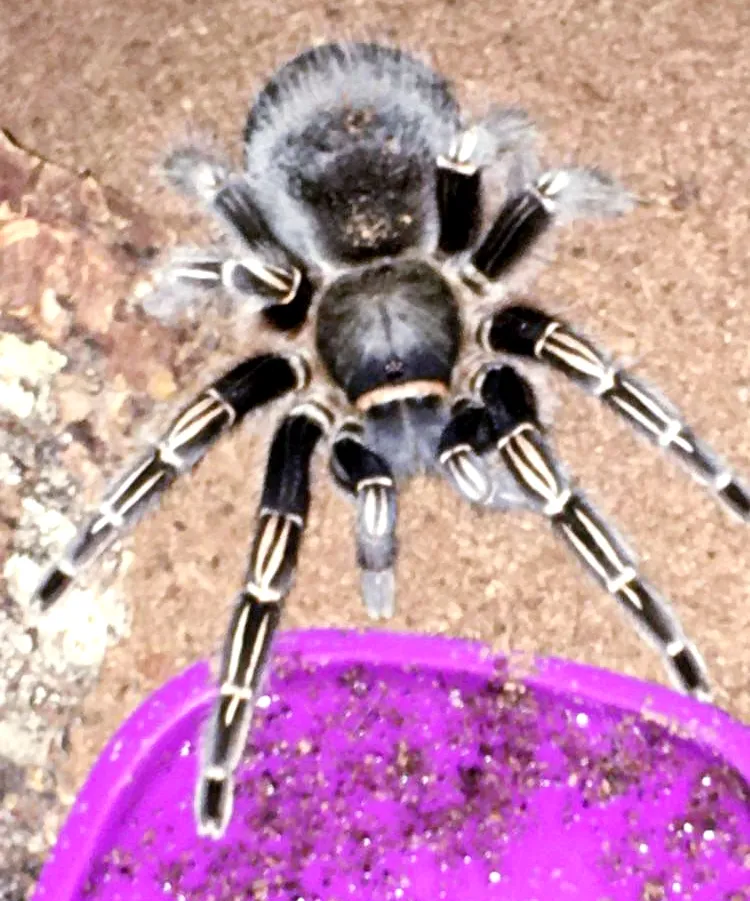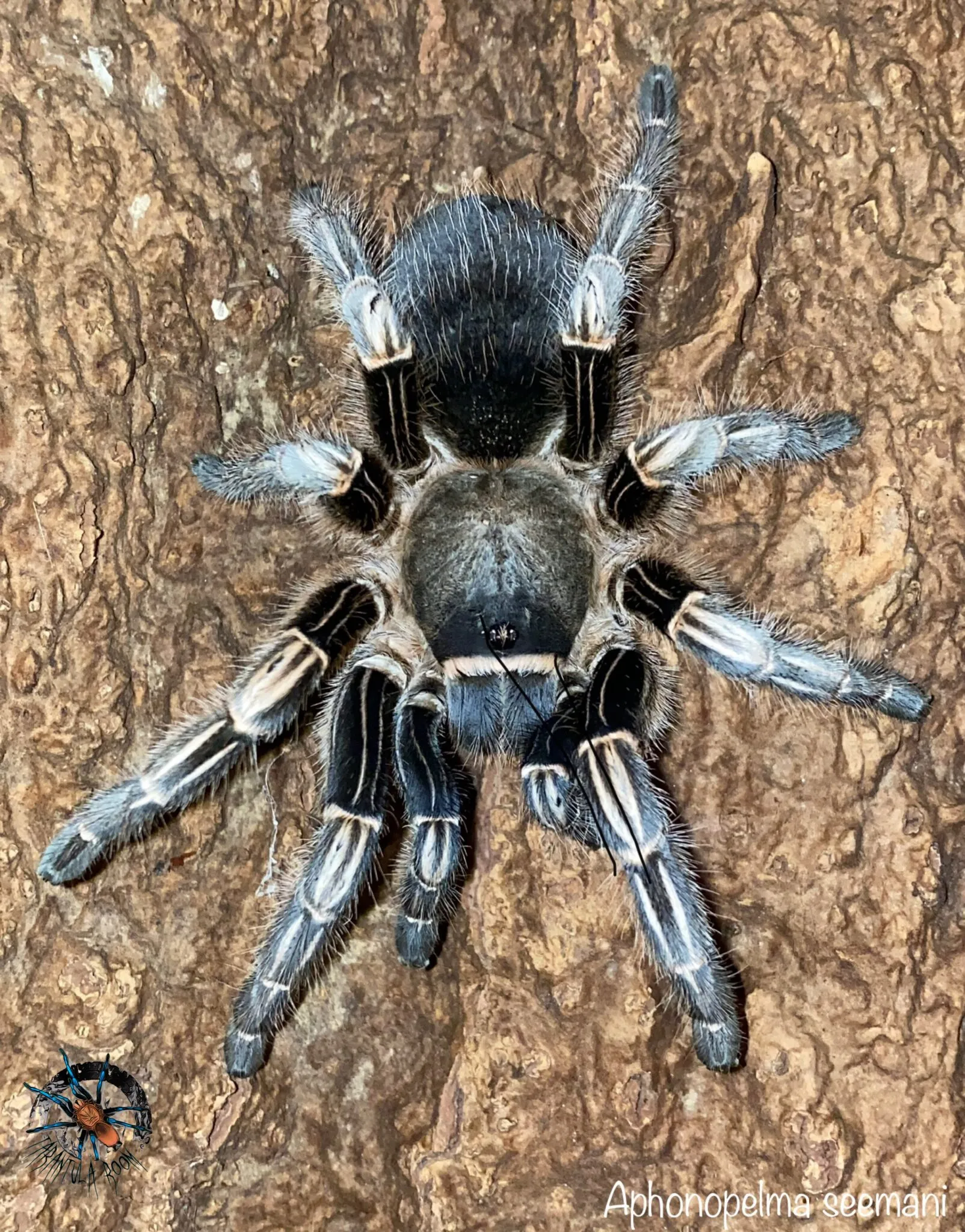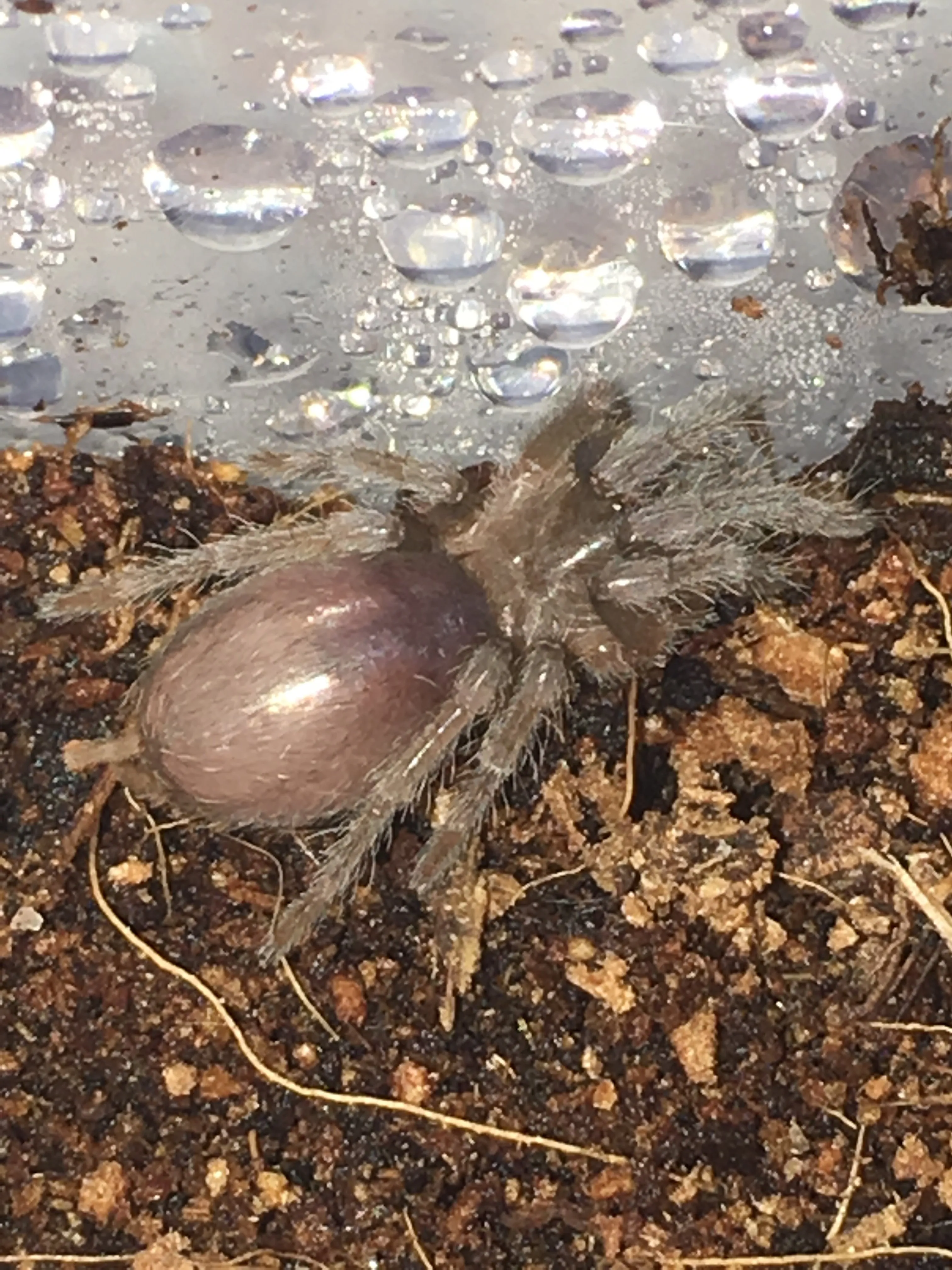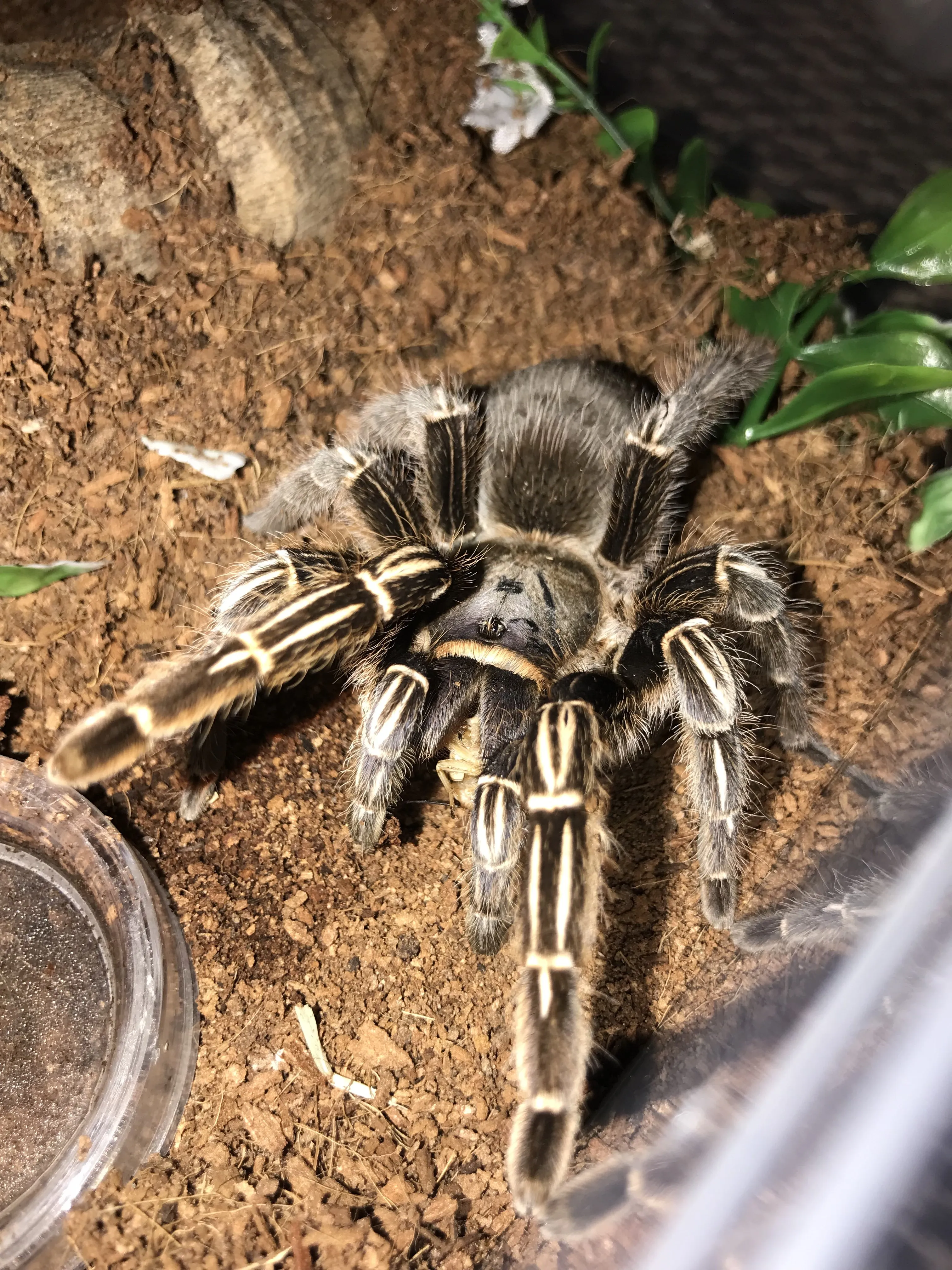Choosing Your BCF Tarantula
Bringing home a BCF tarantula (Brachypelma hamorii) is an exciting experience. These beautiful creatures, also known as the Mexican Red Knee tarantula, can become fascinating pets with proper care. However, the initial step of selecting a healthy tarantula is crucial for ensuring a positive and rewarding experience. A healthy tarantula is more likely to thrive, exhibit its natural behaviors, and live a long, fulfilling life in your care. This guide will help you navigate the process of choosing a BCF tarantula, setting it up in a suitable environment, and providing the necessary care to keep it happy and healthy. Remember, responsible pet ownership is key to the well-being of your new eight-legged friend.
Selecting a Healthy Specimen
When selecting your BCF tarantula, several factors indicate its overall health. Observe the tarantula’s activity level; a healthy tarantula should be alert and responsive to its surroundings, not sluggish or lethargic. Examine the tarantula’s abdomen, which should be plump and round, not shrunken or wrinkled. This indicates proper hydration and feeding. Look for any missing limbs or injuries; while tarantulas can regenerate limbs during molting, it’s best to choose one without any visible damage. Ensure the tarantula has a healthy appetite and is not showing signs of refusing food. A healthy tarantula will generally exhibit a strong feeding response and readily consume appropriate prey items. Observing these key indicators will significantly increase your chances of choosing a robust and healthy BCF tarantula.
Identifying a Healthy BCF Tarantula

Further inspection can help you identify a healthy BCF tarantula. The tarantula’s fangs should be intact and not broken or damaged. Inspect the legs for any signs of mites or parasites. The carapace (the top part of the body) should be smooth and free of any unusual bumps or deformities. The hairs on the body should be intact and not excessively worn. Also, observe the tarantula’s posture; it should be holding its legs in a normal position, not curled up or exhibiting any unusual stances. Research reputable breeders or pet stores to ensure the tarantula comes from a reliable source, as this increases the likelihood of obtaining a healthy specimen. Taking the time to carefully assess these details will help you make an informed decision and bring home a thriving BCF tarantula.
Setting Up the Perfect Enclosure
Creating the ideal habitat is crucial for your BCF tarantula’s well-being. The enclosure should mimic the tarantula’s natural environment, providing a safe and comfortable space for it to thrive. The enclosure should provide ample space for the tarantula to move around, burrow, and exhibit its natural behaviors. Proper temperature, humidity, and substrate are essential for the tarantula’s health and molting process. This section will outline the essential components of a well-designed enclosure, ensuring your BCF tarantula has a comfortable and enriching home.
Enclosure Size and Type
The size of the enclosure should correspond to the size of your BCF tarantula. A good rule of thumb is to provide an enclosure that is at least three times the tarantula’s leg span in width and length. For a juvenile BCF tarantula, a small terrarium or a plastic enclosure with adequate ventilation is suitable. As the tarantula grows, you’ll need to upgrade to a larger enclosure. The type of enclosure can vary; glass terrariums or clear plastic containers are common choices, allowing for easy observation. Ensure the enclosure has a secure lid to prevent escape and adequate ventilation to maintain airflow and prevent mold growth. The enclosure should be easy to clean and maintain, promoting a healthy environment for your BCF tarantula.
Substrate and Decor

The substrate forms the base of the enclosure and is essential for maintaining humidity and providing a comfortable environment. The substrate should be deep enough for the tarantula to burrow, which is a natural behavior for BCF tarantulas. A mix of peat moss, coco fiber, and a small amount of vermiculite is an ideal substrate mixture. This blend retains moisture well and allows for easy burrowing. Decorate the enclosure with items that provide hiding places, such as cork bark, artificial plants, or half logs. These additions make the tarantula feel secure and provide enrichment. Avoid using sharp or abrasive materials that could injure the tarantula. Always ensure that any decorations are clean and non-toxic. These essential components will allow your BCF Tarantula to thrive.
Maintaining Proper Humidity and Temperature
BCF tarantulas thrive in specific humidity and temperature ranges. Maintaining these conditions is crucial for their health and well-being. Use a hygrometer to monitor the humidity levels, aiming for 65% to 75%. You can increase humidity by misting the enclosure with dechlorinated water, ensuring the substrate stays slightly moist. Provide a shallow water dish with fresh water at all times. The temperature should be kept between 75°F and 85°F (24°C and 29°C). Use a heat lamp or a heat mat on one side of the enclosure to maintain this temperature. Ensure the heat source is regulated with a thermostat to prevent overheating. Regularly monitor the temperature with a thermometer to ensure it remains within the ideal range. Proper humidity and temperature will create a healthy habitat and make your BCF tarantula feel safe and happy.
Feeding Your BCF Tarantula
Proper feeding is essential for your BCF tarantula’s growth and development. Understanding the appropriate prey items, feeding frequency, and water provision is key to ensuring your tarantula receives the nutrition it needs. A well-fed tarantula is a healthy tarantula. This section will outline the essentials of feeding your BCF tarantula, offering guidelines for providing the optimal diet and ensuring its well-being.
Appropriate Prey Items

The primary food source for BCF tarantulas is insects. Crickets, mealworms, and roaches are excellent choices. These insects are readily available and provide the necessary nutrients for your tarantula. The size of the prey should be appropriate for the tarantula’s size; it’s generally recommended that the prey item be no larger than the tarantula’s abdomen. Avoid feeding wild-caught insects, as they may carry parasites or pesticides. You can also vary the diet occasionally with other insects, such as waxworms or superworms, as treats. Gut-load the insects before feeding them to your tarantula by providing them with nutritious food, such as fruits, vegetables, and insect food. This ensures that your tarantula receives essential vitamins and minerals. Always remove uneaten prey within 24 hours to prevent stress to the tarantula and maintain enclosure cleanliness.
Feeding Frequency
The feeding frequency of your BCF tarantula depends on its age and size. Juvenile tarantulas typically require more frequent feeding than adults. As a general guideline, feed juvenile tarantulas two to three times a week. Adult tarantulas can be fed once a week or every other week. Observe your tarantula’s abdomen; a plump abdomen indicates it is well-fed. If the abdomen appears overly large or the tarantula refuses food, reduce the feeding frequency. During the molting process, tarantulas will typically stop eating. Do not offer food during this period. Monitor the tarantula’s behavior and adjust the feeding schedule as needed. This will keep the BCF Tarantula healthy.
Providing Water
Providing fresh water is essential for your BCF tarantula’s hydration and overall health. Always provide a shallow water dish filled with fresh, dechlorinated water. The water dish should be shallow enough to prevent the tarantula from drowning. Regularly clean the water dish to prevent bacterial growth. Replace the water daily or as needed to keep it clean and fresh. Some keepers mist the enclosure lightly to provide additional moisture, but this is not a replacement for a water dish. Ensure the tarantula always has access to clean water to maintain its health and well-being. It will also help with the molting process.
Handling Your BCF Tarantula

While BCF tarantulas are relatively docile, they are not typically handled. Overhandling can stress the tarantula and increase the risk of bites. It’s important to understand your tarantula’s temperament, practice safe handling practices, and prioritize its well-being. This section will guide you on understanding your tarantula’s behavior and handling it with care, ensuring both your safety and the tarantula’s welfare.
Understanding Tarantula Temperament
BCF tarantulas are known for their docile nature but can still exhibit defensive behaviors. They may flick urticating hairs (small, irritating hairs) as a defense mechanism. Some tarantulas may also bite if they feel threatened. Before attempting to handle your tarantula, observe its behavior. If the tarantula is displaying defensive postures, such as raising its front legs or exposing its fangs, it’s best to avoid handling it. Learn to recognize the tarantula’s body language and respect its boundaries. Understanding your tarantula’s temperament allows you to interact with it in a safe and respectful manner. Avoid handling immediately after feeding or during the molting period, as these are times when the tarantula may be more vulnerable and stressed.
Safe Handling Practices
If you choose to handle your BCF tarantula, prioritize safety. Handle the tarantula over a soft surface, such as a bed or a carpeted area, to minimize the risk of injury if it falls. Approach the tarantula slowly and gently. Use a soft brush to gently coax the tarantula onto your hand, avoiding any sudden movements. Avoid touching the tarantula’s fangs or the urticating hairs on its abdomen. Wash your hands thoroughly after handling the tarantula to remove any potential irritants. Supervise children when they interact with the tarantula. Remember, handling should always be minimized and done with respect for the tarantula’s well-being.
Regular Enclosure Maintenance

Regular enclosure maintenance is essential for maintaining a clean and healthy environment for your BCF tarantula. Routine cleaning, waste removal, and water dish maintenance are crucial for preventing the build-up of bacteria and promoting your tarantula’s well-being. A clean enclosure is also easier to observe your tarantula.
Cleaning and Waste Removal
Remove any uneaten prey and fecal matter from the enclosure regularly, ideally once or twice a week. Use a pair of tongs to remove any waste carefully, being mindful not to disturb the tarantula. Spot-clean the enclosure as needed, removing any debris or mold. Regularly clean the enclosure’s walls to remove any condensation or residue. Avoid using harsh chemicals or cleaning agents; instead, use a mild soap solution and rinse thoroughly. Maintaining a clean enclosure helps to control odors and reduces the risk of health problems. Your BCF Tarantula will benefit from a clean environment.
Water Dish Cleaning
The water dish should be cleaned and refilled frequently, ideally daily. Remove the water dish and thoroughly clean it with a mild soap solution. Rinse the dish thoroughly to remove any soap residue. Refill the dish with fresh, dechlorinated water. A clean water dish is essential for preventing bacterial growth and ensuring your tarantula has access to clean water. Maintaining a clean water source is a simple but crucial aspect of BCF tarantula care.
Recognizing and Addressing Health Issues

Being able to recognize and address potential health issues is critical to ensuring your BCF tarantula’s well-being. Familiarize yourself with common health problems and know when to seek professional veterinary care. This section covers signs of illness, common ailments, and when to consult a veterinarian, ensuring you’re prepared to handle any health challenges that may arise.
Common Health Problems
Some common health problems in BCF tarantulas include parasites, fungal infections, and injuries. Mites can infest the tarantula and cause irritation; if you notice small, moving specks on your tarantula, it may have mites. Fungal infections can result from poor ventilation or excessive humidity; look for discolored patches or lesions on the tarantula’s body. Injuries can occur if the tarantula falls or is mishandled; monitor the tarantula for any signs of injury, such as missing limbs or bleeding. Quarantine any new tarantulas or those exhibiting signs of illness to prevent the spread of disease to healthy tarantulas. Providing the proper habitat will help prevent some of these potential ailments.
When to Seek Veterinary Care
While some minor health issues can be addressed at home, it’s essential to know when to seek professional veterinary care. If you observe any of the following signs, consult a veterinarian experienced in exotic animals: significant loss of appetite, lethargy, difficulty moving, unusual swelling, open wounds that are not healing, or any other concerning symptoms. A veterinarian can diagnose the problem and provide the appropriate treatment. Early intervention is key to successful treatment. It’s always best to err on the side of caution and seek professional medical advice if you are concerned about your BCF tarantula’s health. This will help keep your BCF Tarantula healthy.
Molting Process
Molting is a natural process for BCF tarantulas, where they shed their exoskeleton to grow and regenerate. This process can be stressful for the tarantula. Understanding the molting process, what to expect, and how to support your tarantula during this time will help ensure the tarantula is safe and can grow. This section will outline what you need to know about molting and guide you on providing proper care during this critical phase.
What to Expect During Molting
Before molting, the tarantula may become inactive and stop eating. The abdomen may appear darker or more swollen. The tarantula will often construct a web mat or burrow in preparation for molting. The molting process itself involves the tarantula lying on its back and slowly pushing out of its old exoskeleton. It’s important not to disturb the tarantula during molting, as it is vulnerable. The process can take several hours or even days, depending on the tarantula’s size and age. After molting, the tarantula’s new exoskeleton will be soft and vulnerable. It will take several days or weeks for the new exoskeleton to harden.
Supporting Your Tarantula During Molting
During molting, provide a secure and undisturbed environment. Keep the enclosure humidity and temperature within the ideal range. Do not offer food during the molting process. After the tarantula has molted, wait for the new exoskeleton to harden before offering food. Provide a shallow water dish with fresh water. Avoid handling the tarantula immediately after molting, as the new exoskeleton is soft and easily damaged. Avoid disturbing the tarantula during and immediately after the molting process, as it is very vulnerable. Allowing the molting process to occur naturally and providing a safe and stable environment are essential for the tarantula’s well-being.
